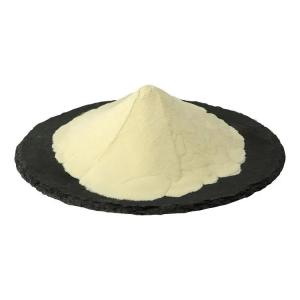News list
News Center
Hot Product
News
The role of phosphoric acid in healthy eating frameworks
Time:2025-10-11
1. Introduction
Healthy eating frameworks aim to guide individuals and communities toward dietary choices that promote long-term well-being, sustainability, and nutritional balance. Within these frameworks, discussions about food additives and processing ingredients—such as phosphoric acid—have become increasingly important. Phosphoric acid, widely used in food and beverage production, plays multiple roles in maintaining product quality and safety while also contributing to total phosphorus intake. Understanding its place in healthy eating contexts helps align industrial practices with public health goals.
2. Functional Importance in the Food System
Phosphoric acid serves as a pH regulator, acidulant, and stabilizer in a wide range of foods, including beverages, dairy products, and baked goods. These functions are vital for ensuring product consistency, flavor balance, and preservation. In healthy eating frameworks, such technological functions are considered essential for maintaining food safety and extending shelf life—two important aspects of modern nutrition systems that reduce food waste and improve accessibility.
3. Contribution to Dietary Phosphorus
Phosphorus is an essential mineral required for bone formation, cellular energy production, and metabolic regulation. Phosphoric acid contributes to the total phosphorus pool in the human diet, particularly in processed foods and beverages. While naturally occurring phosphorus in whole foods is beneficial, the presence of readily absorbable forms from additives such as phosphoric acid raises questions about intake moderation. Healthy eating models therefore emphasize balanced consumption, encouraging whole-food sources while maintaining awareness of additive-derived phosphorus.
4. Alignment with Nutritional Balance Principles
Modern dietary frameworks—such as the Dietary Guidelines for Americans and the WHO Healthy Diet Model—highlight moderation, diversity, and nutrient density. Phosphoric acid, when used within regulated limits, supports these principles indirectly by improving product stability and safety. However, excessive inclusion in high-calorie or sugar-rich beverages can conflict with broader health goals. The challenge lies in contextual use—ensuring that phosphoric acid supports food quality without undermining overall diet quality.
5. Regulatory Oversight and Global Standards
Phosphoric acid’s inclusion in foods is closely regulated by international bodies such as the Food and Agriculture Organization (FAO), the World Health Organization (WHO), and national food safety agencies. Acceptable Daily Intake (ADI) levels are established to ensure safe consumption. Within healthy eating frameworks, these regulatory measures form part of the foundation that balances technological utility with consumer protection. Transparency in labeling and responsible formulation are increasingly emphasized by both policymakers and industry stakeholders.
6. Perspectives on Sustainable Nutrition
Healthy eating frameworks increasingly integrate sustainability as a core component. The use of phosphoric acid connects to the global phosphate cycle, a critical environmental resource issue. Efficient use of phosphorus-based materials, reduced food waste, and sustainable sourcing of phosphate minerals align with the broader goal of sustainable nutrition. Thus, discussions about phosphoric acid extend beyond health to include ecological responsibility.
7. Conclusion
Phosphoric acid occupies a complex but meaningful position within healthy eating frameworks. It supports modern food production through its functional benefits while contributing to the nutrient composition of the diet. The key to its responsible use lies in balance, regulation, and transparency—ensuring that technological advantages complement, rather than compromise, public health objectives. As global nutrition continues to evolve, integrating scientific, regulatory, and sustainability perspectives will remain essential to defining the appropriate role of phosphoric acid in a truly healthy diet.
Healthy eating frameworks aim to guide individuals and communities toward dietary choices that promote long-term well-being, sustainability, and nutritional balance. Within these frameworks, discussions about food additives and processing ingredients—such as phosphoric acid—have become increasingly important. Phosphoric acid, widely used in food and beverage production, plays multiple roles in maintaining product quality and safety while also contributing to total phosphorus intake. Understanding its place in healthy eating contexts helps align industrial practices with public health goals.
2. Functional Importance in the Food System
Phosphoric acid serves as a pH regulator, acidulant, and stabilizer in a wide range of foods, including beverages, dairy products, and baked goods. These functions are vital for ensuring product consistency, flavor balance, and preservation. In healthy eating frameworks, such technological functions are considered essential for maintaining food safety and extending shelf life—two important aspects of modern nutrition systems that reduce food waste and improve accessibility.
3. Contribution to Dietary Phosphorus
Phosphorus is an essential mineral required for bone formation, cellular energy production, and metabolic regulation. Phosphoric acid contributes to the total phosphorus pool in the human diet, particularly in processed foods and beverages. While naturally occurring phosphorus in whole foods is beneficial, the presence of readily absorbable forms from additives such as phosphoric acid raises questions about intake moderation. Healthy eating models therefore emphasize balanced consumption, encouraging whole-food sources while maintaining awareness of additive-derived phosphorus.
4. Alignment with Nutritional Balance Principles
Modern dietary frameworks—such as the Dietary Guidelines for Americans and the WHO Healthy Diet Model—highlight moderation, diversity, and nutrient density. Phosphoric acid, when used within regulated limits, supports these principles indirectly by improving product stability and safety. However, excessive inclusion in high-calorie or sugar-rich beverages can conflict with broader health goals. The challenge lies in contextual use—ensuring that phosphoric acid supports food quality without undermining overall diet quality.
5. Regulatory Oversight and Global Standards
Phosphoric acid’s inclusion in foods is closely regulated by international bodies such as the Food and Agriculture Organization (FAO), the World Health Organization (WHO), and national food safety agencies. Acceptable Daily Intake (ADI) levels are established to ensure safe consumption. Within healthy eating frameworks, these regulatory measures form part of the foundation that balances technological utility with consumer protection. Transparency in labeling and responsible formulation are increasingly emphasized by both policymakers and industry stakeholders.
6. Perspectives on Sustainable Nutrition
Healthy eating frameworks increasingly integrate sustainability as a core component. The use of phosphoric acid connects to the global phosphate cycle, a critical environmental resource issue. Efficient use of phosphorus-based materials, reduced food waste, and sustainable sourcing of phosphate minerals align with the broader goal of sustainable nutrition. Thus, discussions about phosphoric acid extend beyond health to include ecological responsibility.
7. Conclusion
Phosphoric acid occupies a complex but meaningful position within healthy eating frameworks. It supports modern food production through its functional benefits while contributing to the nutrient composition of the diet. The key to its responsible use lies in balance, regulation, and transparency—ensuring that technological advantages complement, rather than compromise, public health objectives. As global nutrition continues to evolve, integrating scientific, regulatory, and sustainability perspectives will remain essential to defining the appropriate role of phosphoric acid in a truly healthy diet.


 CN
CN





